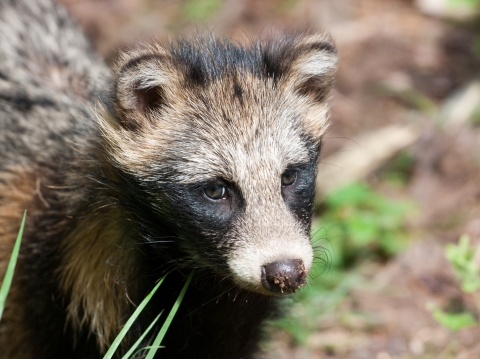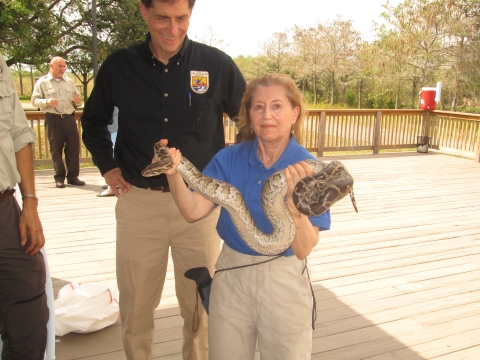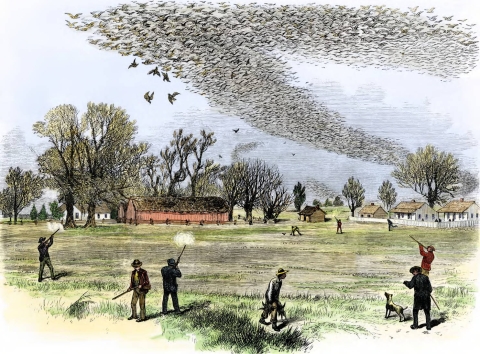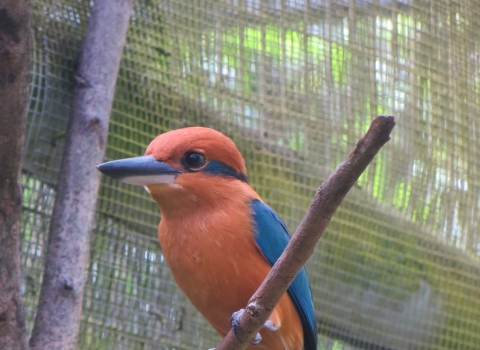Crab-eating mongoose, brushtail possum, raccoon dog, yellow anaconda: you’re unlikely to encounter any of these creatures in the United States, outside of a zoo at least. And that’s a good thing.
They are among the almost 800 species federally listed as “injurious”—a term that applies to certain regulated wildlife with the ability to harm people, agriculture, horticulture, forestry, wildlife, and other natural resources. Raccoon dogs might seem cute until you learn they breed like rabbits, carry rabies, and have an appetite for songbirds.
The injurious wildlife list came into being in 1900 with passage of the nation’s first federal wildlife law—known as the Lacey Act—which is now under the authority of the U.S. Fish and Wildlife Service as two separate statutes.
The original act responded primarily to two different but intersecting threats—the importation of foreign, high-risk, invasive species invasive species
An invasive species is any plant or animal that has spread or been introduced into a new area where they are, or could, cause harm to the environment, economy, or human, animal, or plant health. Their unwelcome presence can destroy ecosystems and cost millions of dollars.
Learn more about invasive species and wildlife trafficking. As pervasive as these problems seem today, the Lacey Act led to regulatory mechanisms, like the injurious list, that have helped keep them in check.
Now, because of the key role the injurious list has played in curbing the spread of harmful wildlife, lawmakers are investing in this tool to help prevent the introduction of a related danger: zoonotic diseases, meaning those that can spread from wildlife to people.
Unsung success
When invaders like Burmese python and northern snakehead—both listed as injurious—dominate headlines, it's easy to overlook what Susan Jewell describes as the unsung success of the injurious list.
In 2021, Jewell, the Service’s injurious wildlife listing coordinator, collaborated with Pam Fuller, former lead for the U.S. Geological Survey’s Nonindigenous Aquatic Species Program, to analyze the 307 species of the nearly 800 on the list that have been listed for “invasiveness” to date (species can be listed for other reasons).
They found that 100% of species not already established in the U.S. when added to the list have remained that way. A perfect track record.
As Jewell and Fuller note in their study, it’s hard to prove that the injurious listing is the sole reason for a species’ continued absence from the U.S., but it’s a factor. If nothing else, making it unlawful to import a species has an immediate chilling effect on the market for it.
Jewell and Fuller also argue that when a species is already established by the time of listing as injurious, it shouldn’t be considered a failure. While the Burmese python had made itself at home in South Florida when it was listed in 2012, the Service took advantage of the opportunity to proactively list three other species of large foreign constrictors that year, and four more in 2015, to keep history from repeating.
Injurious listing is a tool with preventative power. That’s why, in the wake of the first wave of the coronavirus pandemic, lawmakers saw the potential for the injurious list to help ward off future carriers of zoonotic pathogens.
The injurious provisions of the Lacey Act already allow the Service to regulate as injurious wildlife that aren’t invasive themselves, but are known hosts of parasites or pathogens that could spread to other wildlife and humans. With passage of the American Rescue Plan Act, the Service received funding specifically for regulating wildlife that could pose that risk to humans.
“Since an amendment that was made in 1960, we can list wildlife species if they cause harm to humans, which could include being hosts of a disease infectious to humans,” Jewell said.
In a way, it’s fitting. The Lacey Act was the product of another kind of outbreak.
The birds
In the late 1800s, biologists in the U.S. were growing alarmed about birds—native birds that were vanishing, and invasive birds that were multiplying.
At one extreme was the passenger pigeon. Once so abundant that flocks were said to block out the sun as they passed overhead, the native woodland species was being quickly hunted to extinction to meet the lucrative demand for cheap meat in big cities.
While market hunters were pillaging the Eastern forests for passenger pigeons despite limits set by many states, Shakespeare enthusiasts were releasing birds from Great Britain: English sparrows and European starlings.
Intentionally brought from Europe starting in the 1850s, both species quickly become entrenched, much to the dismay of farmers. Not only did they displace native birds that kept crop-eating insects in check, they devoured the crops themselves.
These parallel bird crises were red flags in both the agricultural and conservation communities. U.S. Representative John F. Lacey decided to do something about it.
Lacey’s Act
In 1900, Lacey introduced legislation aimed at both problems—establishing a list of injurious wildlife that were unconditionally forbidden from the U.S., prohibiting the import of any other foreign wild mammal or bird without a permit, and outlawing the transport of wildlife, dead or alive, across a state boundary in violation of a state law.
For context: this was revolutionary. The first federal law that protected wildlife in the U.S. addressed the risks both from commercial exploitation and ecological invasion.
“John Lacey was a real pioneer, as were the behind-the-scenes biologists who brought these problems to his attention,” Jewell said.
For nearly 50 years, few non-native wildlife entered the U.S. Those that did were documented.
In researching the history of the act, which was initially administered by the U.S. Department of Agriculture, Jewell found a record of the first transatlantic shipment of wildlife to enter the country by air. On August 4, 1929, the dirigible Graf Zeppelin arrived in Lakehurst, New Jersey, from Germany “carrying a gorilla, a chimpanzee, and 593 canaries.”
Evolution
Things changed after the newly established U.S. Fish and Wildlife Service took over the authority for the act in 1940.
In 1948, when language was added to ensure humane shipping conditions for live animals, the clause prohibiting the import of foreign—but not injurious— wild mammals and birds without a permit disappeared, likely an inadvertent deletion.
In 1960, the law was amended to allow species listed as injurious—those that previously were unconditionally prohibited—to be imported with a permit for a strict set of purposes: zoological, educational, medical, and scientific. That’s why you might run into a raccoon dog or a yellow anaconda at a zoo.
But the statute was also expanded that year to allow amphibians, reptiles, fishes, mollusks, and crustaceans, in addition to birds and mammals, to be considered for listing as injurious—a response to the increase in escaped venomous snakes, piranhas, and other exotic species imported to furnish private collections.
During the 20th century, the provisions of the law related to injurious species and wildlife trafficking were separated into two different statutes (18 USC 42 and 16 USC 3371-3378, respectively). Both are still referred to as the Lacey Act, and they often intersect.
“They are absolutely still related,” Jewell said. “It’s rare that there is a violation of just the injurious wildlife law without a simultaneous violation of the trafficking law.”
The ones that got away
Some things have stayed the same, including a few of the original injurious species. The Indian mongoose and an entire genus of fruit bats were listed in 1900 and remain on the list today.
The two troublesome birds, however, are gone from the list. “They were removed in 1960 because by then, they were so widespread, there was nothing to be done about it,” Jewell said.
But they serve as reminders of the many other risky species the injurious list has kept out.
Next time you see a flock of English sparrows or European starlings descend upon your lawn, think of John Lacey and those who championed the forward-thinking law that is his legacy. And imagine how much worse things would be without it.
Learn more about the Service’s Injurious Wildlife Listing Program.









